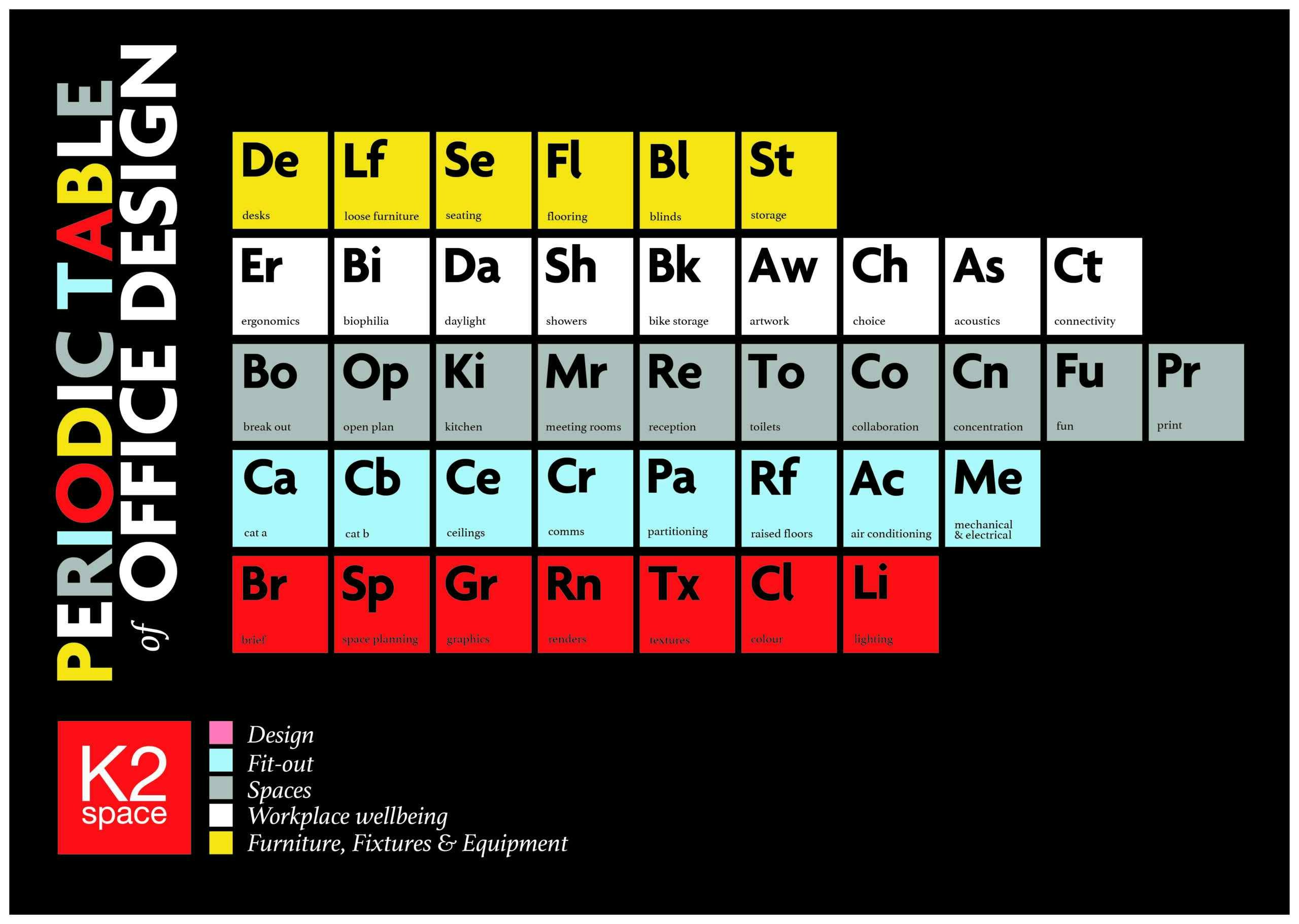We had a lot of fun working on the Periodic Table of Office Design which we hope you find not only useful but also inspiring.
The Periodic Table of Office Design has been in the pipeline for some time and certainly helped foster a healthy debate among our design team in relation to what elements should be included (and what shouldn’t), so we completely appreciate that some of you might also feel that we’ve left something out or vice versa – we accept that we are fallible and welcome any feedback. We’ve also read lots of other content while researching and have to mention a recently published book – The Elemental Workplace from Neil Usher, which was truly inspirational – check it out.
Here at K2 Space, we firmly believe that ‘great staff deserve a great workplace’ and have taken a staff-centric view of office design, and hope this is reflected in the Periodic Table of Office Design and the elements that we have included.

